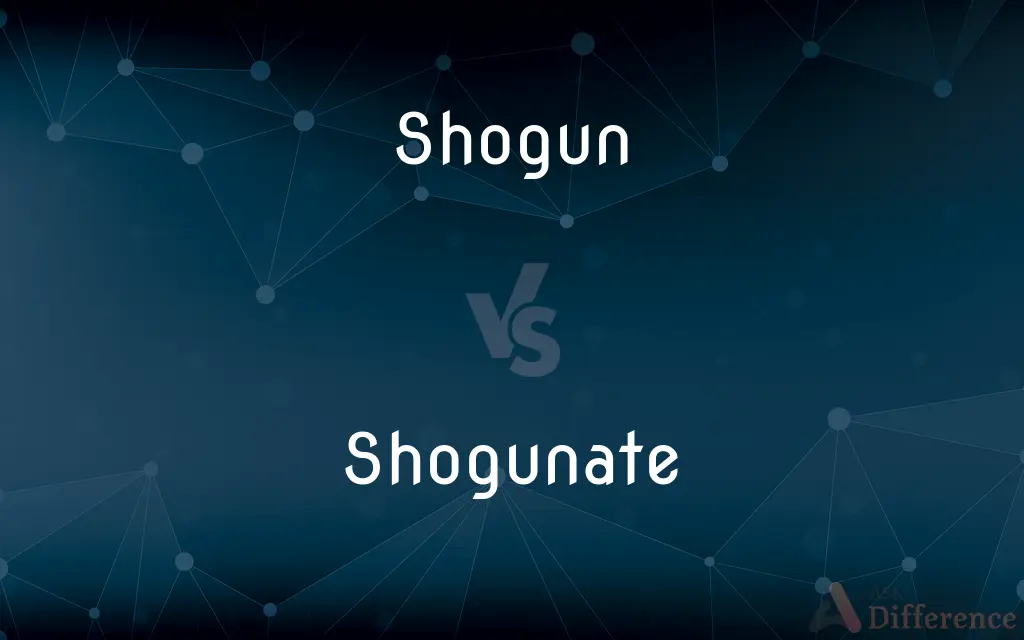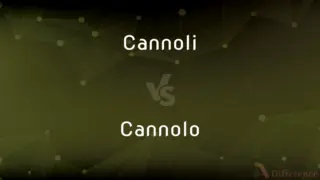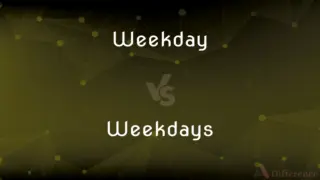Shogun vs. Shogunate — What's the Difference?
By Maham Liaqat & Fiza Rafique — Updated on April 15, 2024
Shogun refers to a military dictator in Japan, while shogunate denotes the system or government led by a shogun.

Difference Between Shogun and Shogunate
Table of Contents
ADVERTISEMENT
Key Differences
Shogun was the title given to the military commanders in Japan, historically vested with actual power, while the shogunate refers to the administrative and governmental structure they established. This distinction highlights the personal role versus the systemic framework.
The term "shogun" originates from the full Japanese title "Seii Taishogun", meaning "Commander-in-Chief of the Expeditionary Force Against the Barbarians", reflecting a military leader’s role. The shogunate, often referred to using the term "bakufu", meaning "tent government", indicates a temporary office evolving into a stable bureaucratic body that governed Japan for extensive periods.
Shoguns held the supreme military authority and often overshadowed the ceremonial power of the emperor during the periods of the shogunate's rule, like in the Kamakura and Edo periods. In contrast, the shogunate system organized the governance and societal structures under this military rule, implementing policies and maintaining order.
A shogun was typically a member of the samurai class and was appointed by the emperor, although the real political power lay with the shogun. The shogunate system, on the other hand, was composed of various officials who were also usually samurai, serving roles in administration, military affairs, and judiciary functions.
The influence and control of a shogun could vary, but generally included military dominance and significant political influence, shaping Japan's history profoundly. The shogunate's establishment meant a more systematic approach to governance, often involving complex bureaucracies and formal policies that extended beyond any single shogun's reign.
ADVERTISEMENT
Comparison Chart
Definition
A military dictator in Japan.
The system of government led by the shogun.
Origin
From "Seii Taishogun".
From "bakufu", meaning "tent government".
Role
Supreme military leader, overshadowing the emperor.
Administrative structure managing governance and order.
Association
Typically a samurai.
Composed of various samurai officials.
Historical Impact
Dominated military and political spheres.
Implemented policies and structured governance.
Compare with Definitions
Shogun
Leader appointed by the emperor but held the real power.
The newly appointed shogun quickly consolidated power, eclipsing the nominal authority of the emperor.
Shogunate
Governmental regime in Japan ruled by shoguns.
The Tokugawa shogunate was known for its strict social order and isolationist policies.
Shogun
Military dictator of Japan historically responsible for ruling the country.
The shogun commanded a vast army and had the final say in governmental affairs.
Shogunate
Administrative and bureaucratic structure established by a shogun.
The shogunate issued laws that were enforced by samurai loyal to the regime.
Shogun
Highest samurai, often having more power than the emperor during certain periods.
As a shogun, he exercised his authority to influence both political and military reforms.
Shogunate
The period during which shoguns ruled over Japan.
During the shogunate, the country experienced peace and economic growth.
Shogun
A title used in Japan until the 19th century, representing the head of the military government.
The last shogun resigned in 1867, marking the end of military rule in Japan.
Shogunate
System that integrated military, administrative, and judicial functions under the shogun’s leadership.
The shogunate system meticulously organized land distribution and taxation.
Shogun
Central figure in Japanese feudal military aristocracy.
The shogun, due to his military prowess, was revered across Japan.
Shogunate
Historical government form characterizing feudal Japan.
The shogunate’s influence waned as Western influences began penetrating Japan in the 1850s.
Shogun
Shogun (将軍, shōgun, Japanese: [ɕoːɡɯɴ] (listen); English: SHOH-gun) was the title of the military dictators of Japan during most of the period spanning from 1185 to 1868. Nominally appointed by the Emperor, shoguns were usually the de facto rulers of the country, though during part of the Kamakura period shoguns were themselves figureheads.
Shogunate
The government, rule, or office of a shogun.
Shogun
One of a line of military commanders who from 1192 until 1867 were generally the actual rulers of Japan, although nominally subordinate to the emperor.
Shogunate
(historical) The administration of a shogun.
Shogun
The supreme generalissimo of feudal Japan.
Shogunate
The office or dignity of a Shogun.
Shogun
A title originally conferred by the Mikado on the military governor of the eastern provinces of Japan. By gradual usurpation of power the Shoguns (known to foreigners as Tycoons) became finally the virtual rulers of Japan. The title was abolished in 1867.
Shogunate
A form of government in which the ruler is an absolute dictator (not restricted by a constitution or laws or opposition etc.)
Shogun
A hereditary military dictator of Japan; the shoguns ruled Japan until the revolution of 1867-68
Common Curiosities
What does shogunate mean?
Shogunate refers to the system or period of government in Japan ruled by the shogun.
How were shoguns chosen?
Shoguns were typically appointed by the emperor, though they held the actual power.
What roles did the shogunate play in governance?
The shogunate organized administration, military governance, and judicial functions.
Which was the longest-lasting shogunate?
The Tokugawa shogunate, lasting from 1603 to 1867, was the longest and most stable.
Did shoguns have absolute power?
Shoguns had significant military and political power, often greater than the emperor's during their reign.
How did common people view the shogun and the shogunate?
Perceptions varied, but generally, the shogun was respected or feared, while the shogunate was seen as the ruling establishment.
What is a shogun?
A shogun was the military dictator of Japan, a samurai leader with significant authority.
Were all shoguns from the samurai class?
Yes, all shoguns were members of the samurai class.
What led to the decline of the shogunate?
The shogunate declined due to internal strife and pressure from Western powers.
When did the shogunate system start and end?
The shogunate began with the Kamakura shogunate in 1192 and effectively ended in 1867 with the Meiji Restoration.
Were there any significant reforms under the shogunate?
Yes, various shogunates implemented significant reforms like land distribution, military organization, and foreign policy.
What was the relationship between the emperor and the shogunate?
The emperor was often a ceremonial figure while the shogunate held actual governing power.
Did the shogunate have any foreign interactions?
Yes, especially during the later years, dealing with trade and diplomacy, notably during the Edo period.
What replaced the shogunate in Japan?
The Meiji Restoration in 1867 replaced the shogunate, restoring imperial rule and modernizing the country.
How did the shogunate impact Japanese culture?
The shogunate influenced various aspects of Japanese culture, including arts, architecture, and social structures.
Share Your Discovery

Previous Comparison
Cannoli vs. Cannolo
Next Comparison
Weekday vs. WeekdaysAuthor Spotlight
Written by
Maham LiaqatCo-written by
Fiza RafiqueFiza Rafique is a skilled content writer at AskDifference.com, where she meticulously refines and enhances written pieces. Drawing from her vast editorial expertise, Fiza ensures clarity, accuracy, and precision in every article. Passionate about language, she continually seeks to elevate the quality of content for readers worldwide.














































